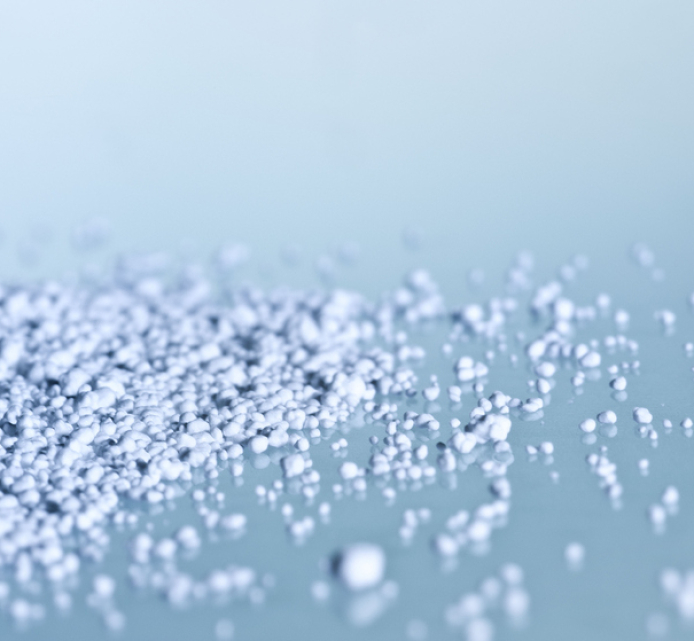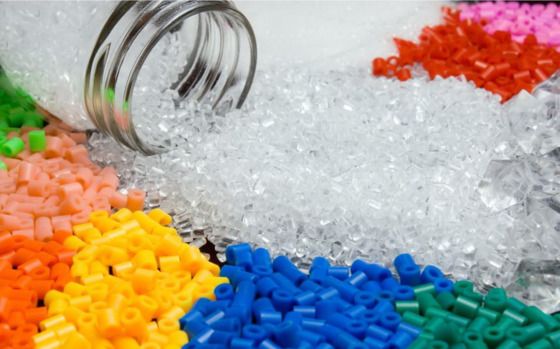
One of the pressing issues for polymer product manufacturing enterprises is the improvement of technological processes. It includes important concepts such as increased productivity and quality, cost reduction, and improvement of melt stability and PET hydrolytic stability. Processing additives have helped solve this issue. They are special substances that expand the capabilities of extrusion machines.
Contents
«Preform Plant» was one of the first to adopt the experience of leading Western enterprises in using processing additives for the production of plastic bottle caps and preforms. We use them to optimize the technological process and enhance the quality of our products.
Types of PET processing additives
Special materials – PPA (Polymer Processing Aid). This concept combines different classes of compounds that facilitate the flow of a high-molecular-weight polymer melt through the channels of a shaping tool.
For polyethylene terephtal, materials with different active ingredients are used: amide, fluoropolymers, oxazoles and a mineral base. They concentrate on the surface of products, improve their technological characteristics. Such processing additives are presented in a wide variety of types:
- ✅ Akkat PB/F 10812B, Akkat PB/F 10812B and Akkat PB/F 108158. The active ingredient in these additives is a fluoropolymer. They prevent the formation of dead spots and deposits, improve surface quality and increase gloss, and also help to quickly change the color of polymers;
- ✅ Akkat PB/F 10450 V. Based on – amide and amorphous silica. Such additives act as an anti-block and heat-resistant slip, prevent the PET material from sticking together during the extrusion process, and improve slip;
- ✅ Akkat PB/F 10121 B. UV stabilizer. At the heart of – 10% UVA, this substance protects against UV radiation, acts as a UV shield, and helps maintain the characteristics of the original polymer;
- ✅ Akkat PB/F 10180 B. Mineral-based additive used to accelerate heating preforms for plastic bottles due to the ability to absorb IR thermal cure and improved heat dissipation;
- ✅ Akkat PB/F 109108. Used to correct color when starting polymers turn yellow due to exposure to high temperature or impurities, gives the material a neutral tint and does not affect its transparency.
Processing additives are selected based on their impact and PET viscosity, the desired effect. Let's consider their influence on the material and the production process in more detail.

How additives work
These materials form a dispersed phase in the raw material matrix, the particle size of which is approximately 1 micron. An important factor here is the quality of mixing. The smaller the processing particles, the more they will reach the head surface in a short period of time, where a sliding layer will form over time.
Processing particles are gradually carried away by the polymer melt. The process is accelerated by abrasive substances (anti-blocking agents and pigments) that may be contained in raw materials, as well as the conditions under which the process proceeds: speed, temperature, the use of other additives. For this reason, when technology conditions change, it is also necessary to adjust the percentage of processing content.
Ways to implement additives
In production, two methods are used to introduce processing into the polymer:
- ✅ At the granulation stage after synthesis.
- ✅ When processing polymer into any products.
The effectiveness of additives largely depends on how well they are mixed with the base polymer. They are introduced, depending on the type, in a very small amount - from 0.5 to 5%. In order to mix them qualitatively with the molten polymer, it is necessary to choose superconcentrates with a minimum particle size (up to 2 microns).
At the same time, it is important to take into account such a thing as compatibility. Fluoroelastomer based processes are not suitable for use with polymer. They do not mix with the particles of the substance, but form a dispersed phase in the matrix.
Interaction with other additives
During the production of products, various substances are often added to the liquid polymer: dyes, stabilizers and other components that improve product characteristics and flow of the technological process. In this regard, the question arises, how do processing additives interact with them? There is no unequivocal opinion on this matter.
The number and type of functional groups of additives can affect the properties of processing additives. According to some literature data, the interaction of oxides and hydroxides on the surface of the head with acid groups of additives is possible, as a result of which the adhesive properties are improved. In any case, the result directly depends on the compatibility of a certain additive with the die material.
The benefits of adding processing additives
As we wrote above, the Preform Factory, which produces plastic covers for bottles and preforms for the production of eggplants, also uses these materials. Application of processing – one of the factors that allows us to be confident in the quality of products and guarantee it to our customers.
The use of additives can solve a number of issues and make the polymer processing process more profitable. Processings affect the physical properties of the material and improve production processes:
- ✅ reduce torque and pressure in the extruder head;
- ✅ reduce or prevent the formation of soot and sticking on the shaping tool due to high thermal stability;
- ✅ reduce the number of – particles of oxidized or crosslinked polymer, unmelted high molecular weight fraction, which are formed in case of premature melting of polymer granules in the extruder loading area
In general, processing additives improve product quality, reduce energy costs and increase the productivity of the polymer manufacturing process. Therefore, their use in industry is a profitable and justified measure.

